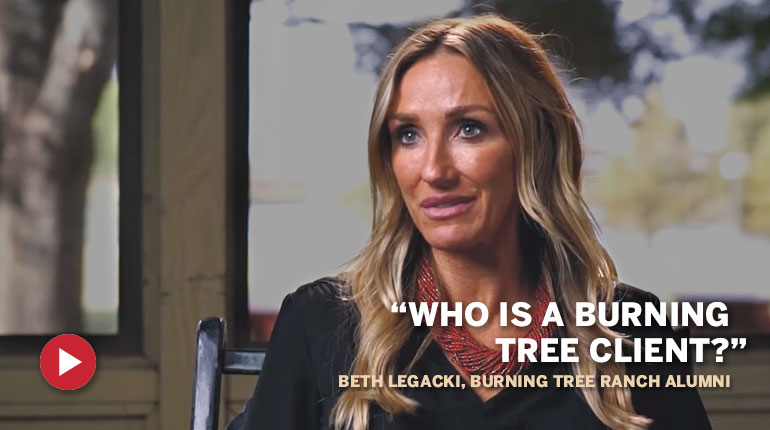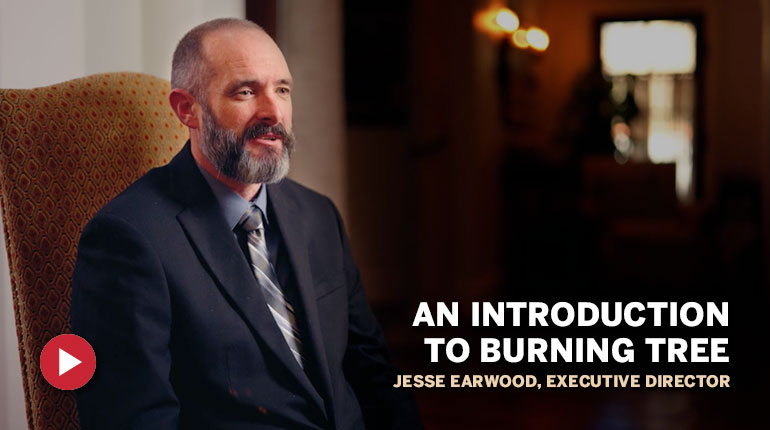After a decade of working in addiction treatment, one thing stands out clearly – measuring sobriety isn’t as straightforward as marking days on a calendar. I’ve sat with countless families who thought they were finally witnessing a lasting recovery, only to face another heartbreaking relapse.
This constant cycle of relapse raises an important question: how can we tell if someone is indeed building a foundation for lasting sobriety versus temporarily abstaining from substances? Additionally, what can our loved one’s patterns of behavior tell us about an impending relapse?
Here, I’ll explore several perspectives on sobriety we share with our families before long-term treatment at Burning Tree Ranch.

Observing Sobriety Through the Lens of Sustained Behavioral Changes
I remember working with a mother who was convinced her son had finally “gotten it” because he’d abstained from active drug & alcohol use for three months – his longest stretch ever. But digging deeper, we discovered he wasn’t doing anything differently. He wasn’t using, but he also wasn’t growing or changing. This illustrates a crucial point – sobriety isn’t just about not using substances.
Lasting sobriety involves fundamental changes in behaviors. These changes should be observable and measurable. That’s why the Burning Tree clinical team evaluates an individual’s recovery using a progress-based approach.
When someone is genuinely working a recovery program, you’ll notice changes that go far beyond just abstinence:
- Consistent attendance at recovery meetings and active participation in a recovery community
- Open, honest communication, even when it’s uncomfortable
- Taking concrete steps toward employment or education goals
- Following through on commitments, both big and small
- Building new relationships with sober individuals
- Willingness to address past behaviors and make amends
- Engaging in personal growth through therapy or counseling
Patterns in the Cycle of Chronic Relapse
At Burning Tree Ranch, we only treat chronic relapse, so understanding the patterns surrounding chronic relapse is central to our work with clients and families. These patterns often emerge with striking similarity across different cases, though the specifics may vary. Early sobriety typically brings a surge of optimism—what we sometimes call the “pink cloud” phase. While this energy can be positive, it’s essential to look deeper.
Signs of Early Recovery:
- Renewed interest in family relationships and social connections
- Physical improvements in sleep, appetite, and overall health
- Making ambitious plans for the future
- Increased energy and enthusiasm
- Better grooming and self-care habits
However, this initial phase often masks underlying issues that haven’t been addressed. That’s why we pay special attention to warning signs that might indicate an approaching relapse.
Pre-relapse Indicators:
- Playing the victim around various topics or circumstances
- Complaining or failing to express gratitude and thanks
- Becoming defensive when concerns are expressed
- Seeking a romantic relationship or partner
- Resisting accountability or responsibility in any form
- Downplaying the severity of past substance use
- Dishonesty in any form, whether omission, commission, or delusion

Measuring Sobriety Beyond Time
Sometimes, a family member will ask me, “How long until we can trust this sobriety?” The truth is duration has much less to do with recovery than actual behaviors. For instance, I worked with a client who had managed six months of abstinence through sheer willpower.
Still, he wasn’t addressing his underlying issues, character defects, or ineffective behaviors. Meanwhile, with just two months clean, another client was actively working on himself, building support systems, and engaging in consistent and trustworthy behavior. One of those clients realized a full, lasting recovery – can you guess which one it was?
Quality sobriety shows up in daily actions and attitudes:
- Inviting feedback and constructive criticism
- Asking for direction and guidance from others
- Making amends and seeking to address past harms
- Inconveniencing oneself for the benefit of others
- Showing up to commitments consistently and reliably
- Expressing gratitude and thanks on a daily or regular basis
- Seeking to understand another’s viewpoint rather than seeking to be understood
- Being honest about struggles and asking for help when needed
The Crucial Distinction: Dry vs. Sober
The difference between being dry and truly sober became clear to me years ago when working with a young woman who had maintained abstinence for nearly a year. Despite not using substances, she was still manipulating family members, avoiding responsibility, and refusing to address her underlying trauma. She was dry but not sober.
This distinction matters because someone who’s simply “dry” often:
- Maintains old thinking patterns and behaviors
- Continues relationships with active users
- Resists addressing mental health issues or trauma
- Relies on others to solve problems
- Shows minimal growth in emotional maturity
- Resists accountability measures
- Struggles with honest self-reflection

Tools for Tracking Recovery Progress
I’ve learned that families often struggle with objectivity when measuring their loved one’s progress. Hope can cloud judgment, and denial can mask warning signs. This isn’t a criticism – it’s a natural response to wanting to believe in recovery. However, I’ve found that maintaining concrete observations helps families stay grounded in reality.
One family I worked with created a simple journal system that proved incredibly valuable. They didn’t write lengthy entries – just brief notes about specific behaviors and patterns they observed. This helped them spot trends they might have missed otherwise.
A Practical Framework for Tracking Recovery Progress
Creating a framework to observe and document behaviors in your loved one may make it easier to discern how their behavior changes (or not) over time. That doesn’t necessarily mean you should scrutinize every action, but instead, practice consistency and objectivity in a way that will allow you to notice distinct patterns over time.
For example, are they consistently showing up for family dinners? Are they transparent about where they’re going and who they’re with? Are they handling stress differently than before?
Consider making consistent daily observations:
- Communication patterns – note both what is said and unsaid
- Follow-through on stated commitments
- Engagement with recovery activities
- Management of daily responsibilities
- Emotional regulation and responses to stress
- Quality of relationships and social choices
- Financial behaviors and transparency
When Professional Help Becomes Necessary
Sometimes, families ask me how they’ll know when to seek additional help. I remember one father who noticed his daughter’s excuses and poor attitude but convinced himself it wasn’t serious. She had already relapsed when he reached out for help.
Observe for these critical warning signs:
- Increasing secretiveness about their schedule or whereabouts
- Sudden abandonment of established recovery routines
- Strong resistance to any form of accountability
- Return of manipulative behaviors, especially around money
- Unexplained financial irregularities
- Marked changes in emotional stability
- Deterioration in physical appearance or health habits
These behaviors often surface gradually, so it is important to keep track of observations over time. If you see several of these signs, don’t hesitate to seek professional guidance.

Supporting Recovery While Staying Vigilant
The bottom line is that finding the right balance between supporting recovery and maintaining awareness isn’t easy. I’ve worked with families who swing between extremes – either watching their loved one’s every move or completely backing off out of fear of pushing too hard.
The most effective approach I’ve seen involves:
- Acknowledging progress while staying aware of potential concerns
- Setting clear, consistent boundaries around behavior
- Expressing care and support without enabling
- Verifying claims about recovery activities
- Maintaining open, honest communication channels
- Staying connected to family support resources
- Being willing to have difficult conversations when needed
At Burning Tree Ranch, we often remind families that recovery isn’t a straight line. There will be good days and challenging ones. The addiction that has gripped their loved one is usually something that settled in over the years. For families, the key is learning to distinguish between regular recovery challenges and genuine warning signs of relapse.
Trust your instincts if you see concerning patterns in your loved one’s behavior. Don’t let fear of being “too paranoid” or “not supportive enough” keep you from seeking help. I’ve seen too many families regret not acting on their early concerns.
Addiction and chronic relapse is a complex issue – it’s not just about willpower or wanting it badly enough. If your loved one is struggling to maintain lasting sobriety, there may be underlying issues that need addressing. Reaching out for professional help isn’t giving up – it’s often the first step toward breaking the cycle of chronic relapse and building a foundation for lasting recovery.
Until next time,
Brook




